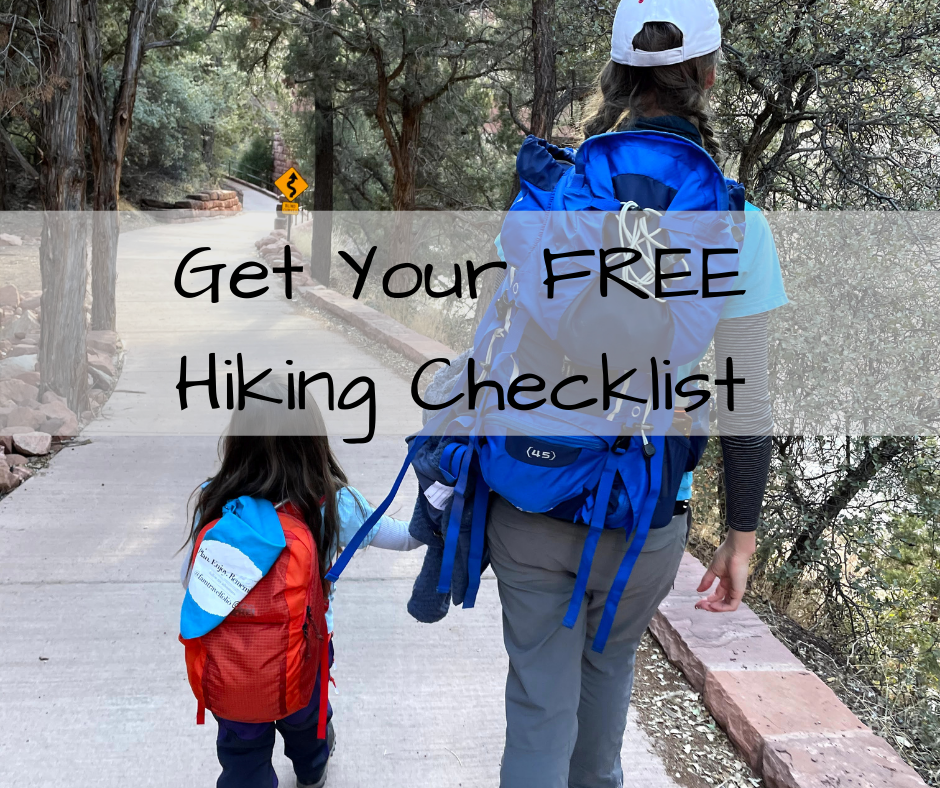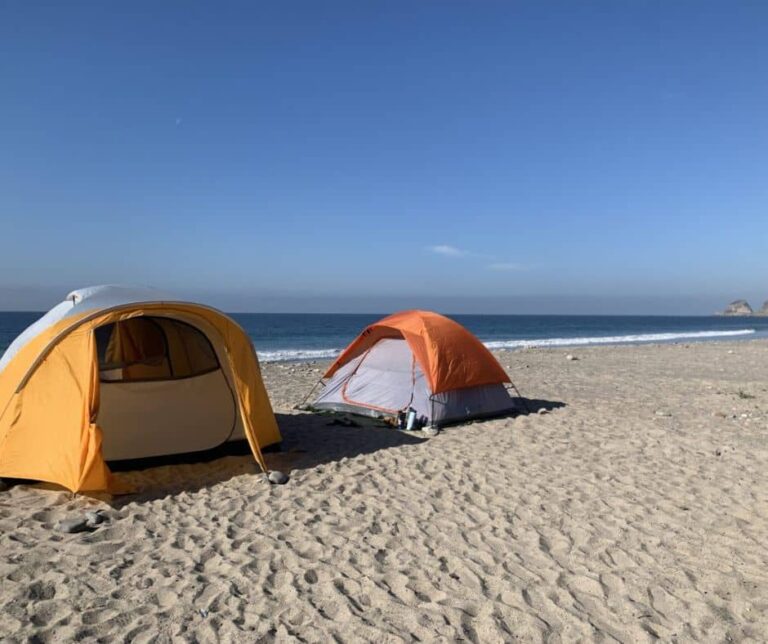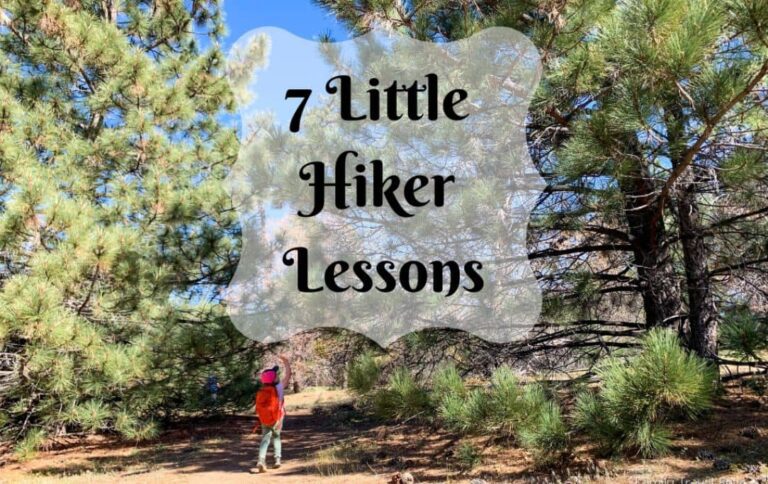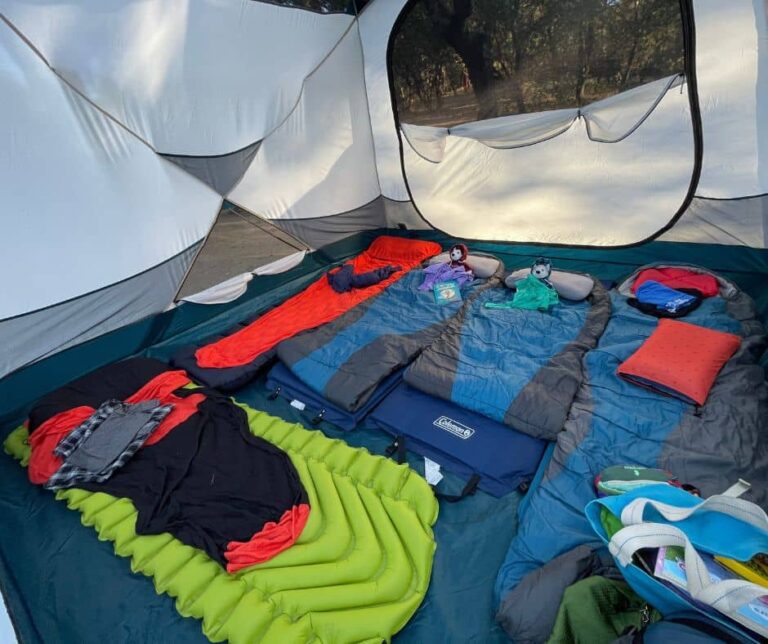Best Family Adventure: Hiking Challenge with your Kids
Check local health and government guidelines before going anywhere.
This post contains affiliate links where we may earn commission at no additional cost to you.
- Why You Should Hike
- Hiking with Young Kids
- How Old Should Kids be before Hiking
- How Far can a Toddler/Young Kid Hike?
- What do you Need when Hiking with Kids?
- How Do I find Family Friendly Trails?
- The 52 Hike Challenge
Want to Go on Family Adventures?
Looking for…
…Something to do with your kids…
…Somewhere to go that’s cheap and close to home…
…A way to Travel…
…A way to Explore…
…A way to spend time with your Family…
I know that time, money, energy, and now travel restrictions can get in the way of family vacations, BUT you don’t need a lot of time or money to hike.
Energy levels increase as your amount of walking/hiking increases.
And as for travel restrictions, some hikes you don’t even see anyone. Although, we do recommend following local state and health guidelines*: bring a mask to wear when passing people and have sanitizer available as not every trail has proper hand washing stations.
*Check your local guidelines for any additional requirements.
Why You Should Hike:
I’ve posted my Top 10 Reasons to Hike on Facebook and Instagram, but here’s the list with a bit more detail:
Top 10 Reasons Why You Should Hike:
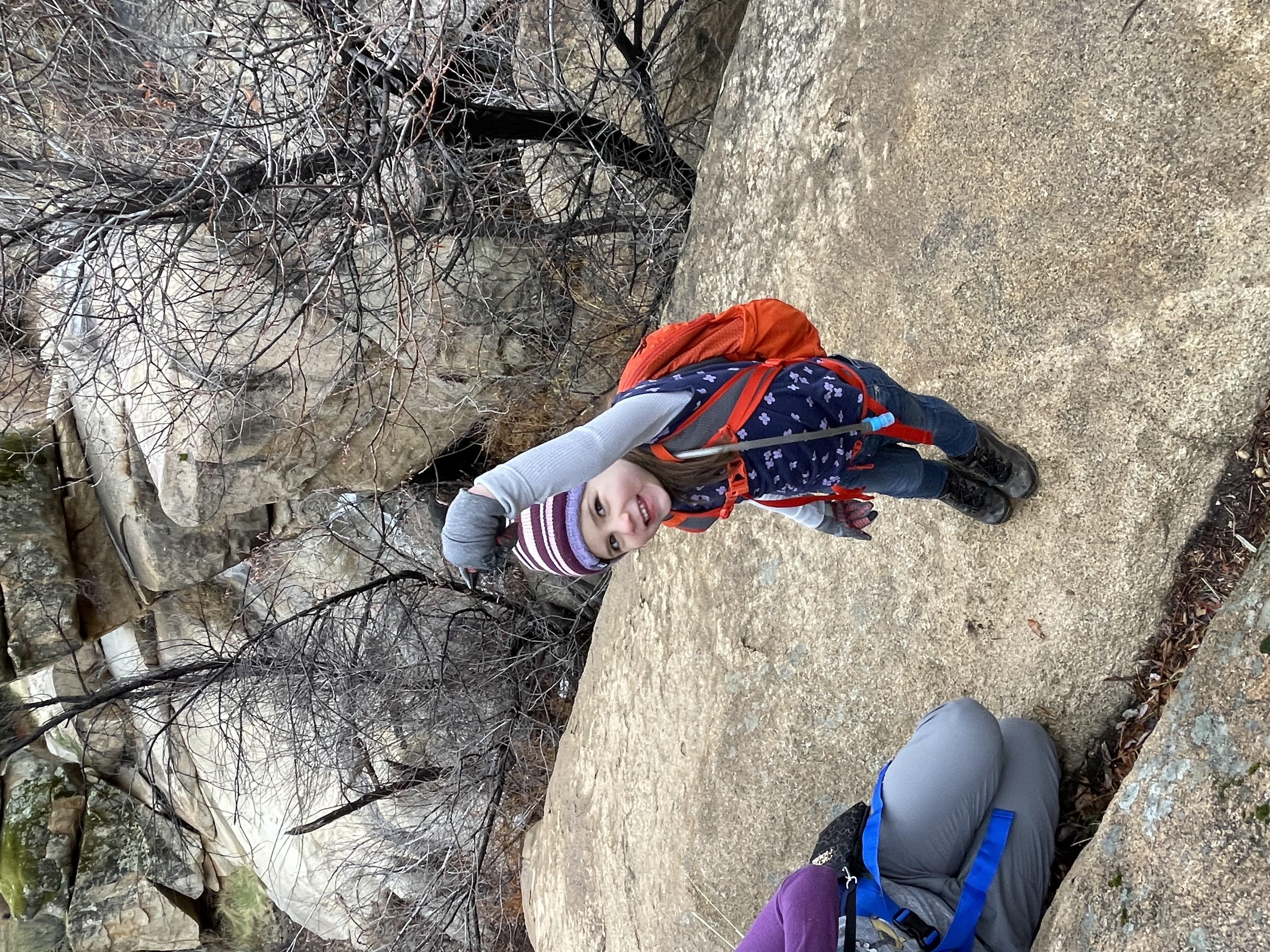

- Exercise & Health Benefits: Get moving, get healthy. It’s not just about your weight either- it’s about stamina and energy. The more you get moving, the more you’re able to move. It makes evenings at home after a long day of work way easier to keep up with the kids wanting your attention. It’s easier to plan more family adventures, because you can keep up with them better. It’s easier to be excited about going places and doing things.
- Activity easily adapted to a variety of levels from easy up to difficult: You don’t need to be a pro. Everyone can hike at whatever level works for them. For families with small children, I recommend not only looking at the difficulty rating of the trail, but the reviews posted as well. Some moderate hikes are super easy & family friendly, while others are not. We use All Trails to look up our hikes (discount on the pro version when you sign up for the 52 Hike Challenge!).
- Sense of Accomplishment: You set out as a family and achieve a goal as a family. It’s a great bonding experience, not to mention a great self-esteem booster for your kids learning how to set and achieve goals. I’ll never forget how excited the munchkins are when they climb up a rock, make it to the top of a mountain, or finish a trail. You’re laying the foundations they need to set goals and achieve them in life.
- Quality Family Time: No work, no school. Take a break from the everyday responsibilities that seem to get in the way of family play time. Talking and sharing the hiking experience is great for that family dynamic. It’s a great time to bond and focus on eachother. Try to learn something new about your kids, your spouse, your family/friends- even if you think you know it all- everyone is always changing, growing, and adapting as they make their way through life.
- “Off the Grid” time minimized screen time from phones and the TV: Many hikes may not even have any signal, really forcing you to get off the screen and spend time together. You can’t ignore the present moment for social media even if you wanted to! Honestly, how can you get mad at your kid for ignoring you for technology if they learned that habit from you? Change it up now and commit to being the example you want to see.
- Experience Nature (plants and animals): What better (or more fun) learning environment is there other than the great outdoors? Form a greater appreciation of the world around us by looking for animals and admiring the plant life surrounding you. Just respectfully keep your distance- you’re a guest in their home. Our munchkin loves finding animal scat and trying to figure out which animal it came from.
- No need to travel far (Check out the AllTrails app): Travel as little or as much as you want to complete your hikes. There are so many trails everywhere, you may not have even realized what’s right by home. So many people think hiking requires being this great outdoors person and driving to the middle of nowhere to have an adventure. It really doesn’t have to be all that complicated unless you want it to be that way. Walk to a nature trail down the street, look up a stairs or bridge hiking challenge in your city, find somewhere close by that matches your level.
- Outdoor Activity (check local government & health guidelines before any adventure): Fresh air, moving around, the great outdoors, sunshine…need I say more? There are so many benefits to getting outside for a chunk of time every day. Hiking is the perfect family activity to get you all out of the house in the open air.
- Take in the View: Whether you are hiking up to a lookout point or wandering through a flat nature walk, the view around you is special. From an ocean cliff hike to a desert exploration to meandering through the forest to climbing up a mountain, there is wonder all around you. Take in the view the whole way, not just the end destination.
- Hiking is fun: Have fun with it! Walk, talk, snack, drink water, explore, observe, laugh, enjoy. Your smile at your accomplishment and time spent with loved ones exploring nature is the best feeling.
Let us know in the comments why you like to hike.
Hiking with Young Kids:
Maybe you’re down to go hiking, but not quite sure on what’s needed- or possible- with little ones tagging along. Hiking with kids takes just a little adjusting. Here are some things to keep in mind:
How Old Should Kids be Before Hiking?
It’s really up to you, your comfort level, and your pediatrician’s recommendation based on your child’s health- there is no age limit.
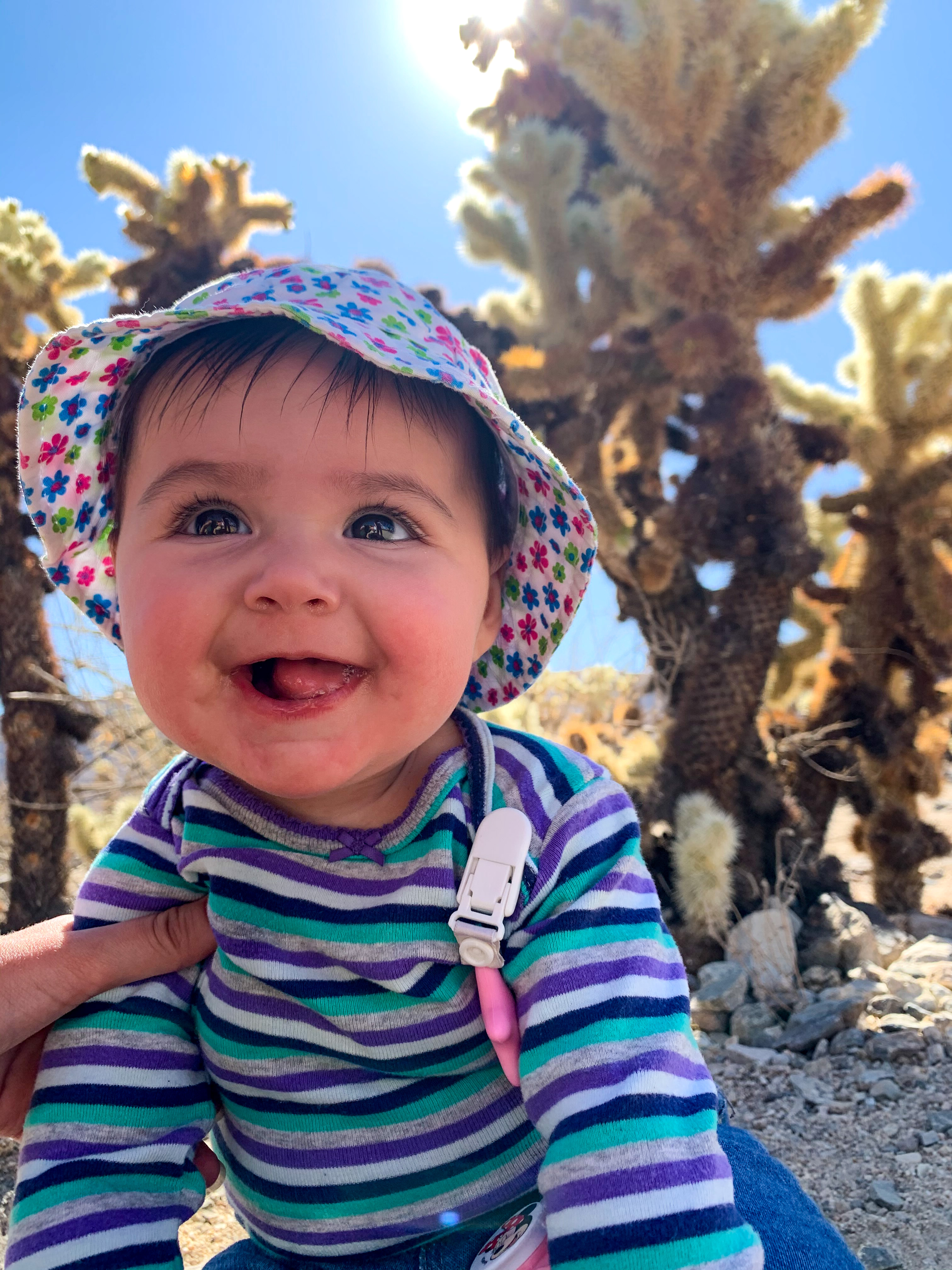

Most sources say that sunscreen can be liberally applied as early as 6 months of age, which is a key component when hiking out in the elements.
Another component to think about is vaccinations- a newborn (0-3 months) is not fully vaccinated yet. And mom postpartum won’t be fully healed during the first 8-10 weeks at least, so if she’s going with…well I wouldn’t hike in the first couple of months after giving birth…
As you can see, there is no direct answer. Every family and every child can be different. Use these thinking points to decide if you’re ready to take baby on a hike:
- Are you physically ready to hike after giving birth?
- Are you able to protect your baby from direct sunlight/apply a thin layer of sunscreen?
- Will the weather be too hot or too cold?
- Have all vaccine boosters been given?
- What does your pediatrician say?
Maybe a short walk along a nature trail or on the beach would be a perfect start, where you can cover your baby from the sun or even take a stroller with.
How Far Can a Toddler/Young Kid Hike?
Babies/Toddlers
As babies/toddlers, they can easily ride in a baby hiking carrier on mom or dad’s back. This makes it easier to go on longer hikes, but more difficult if you’re not used to having that extra weight on your back. Also- side note- watch out for trails with a lot of brush/low tree branches. You can’t really protect their face when they are on your back.
Find a nice, open route, and you’ll walk as long and far as you can (with the extra weight in mind). They will probably sleep most of the way, although the moments they are awake and reacting to seeing a bird or a tree are priceless!
Toddlers can also get down and walk for a bit if you’re comfortable letting them toddle around on a nice open trail. When you get to the point where it’s a bit steeper to one side of the path, I’d recommend having them hitch a ride on your back again.


Young Kids
Once they are a bit too big to be called a toddler and do well walking completely on their own, let them walk! There may be stretches where you need to carry them if you chose a longer hike- or at least plan out strategic rest and snack stops.
Our 4 year old does great with 1.5-2 mile hikes. She even did really well on a 5 mile round-trip hike, but we go on many walks every week and she had been on some shorter hikes before that longer one.
The main thing is to pay attention- choose a shorter hike, see how they react physically and mentally. If they seem good, then slowly increase the length of time and distance. If you choose a longer hike, make sure you are comfortable safely carrying your child if they end up not being able to finish the hike themselves. You don’t want to throw off your balance carrying a kid downhill, so make sure it’s a flatter trail if you’re going for an increased distance.
Really the only difference between a hike and a walk is that a hike is usually referring to a little bit longer of a distance typically in nature. Neighborhood walks are a great way to build up muscles and stamina for longer hikes since you can bring the stroller with you if your little kid can’t quite make the distance yet.
I even read about walking/hiking being a great build up for kids to not get exhausted as quickly on family Disneyland trips- genius idea, as a day at Disneyland can easily total over 10 miles.
Maybe our 52 hike challenge can be a precursor to prepping for a Walt Disney World Vacation… *hint, hint*


5 Tips for How to Start Hiking with Kids
- Check the Distance: start small, maybe 1 mile (1.6km) or less.
- Check the Elevation Gain: the larger the gain, the steeper and more taxing the climb. Start off with flat or a low elevation gain, and work your way up to a more moderate level.
- Check the Weather: babies and toddlers aren’t walking like you are, so they won’t be able to warm themselves up like you will by hiking. Check the weather ahead of time and dress in (or pack) extra layers.
- Have Patience: You will hike more slowly than you are used to. Period. Accept it as a fact, and enjoy looking at the rocks and leaves. Stop and listen to the birds and waterfalls. It’s not about the destination, it’s about the time spent together. Don’t focus on racing to the end or the top of the trail, soak in every precious moment and see the adventure through their eyes.
- Be Prepared: Snacks, knowledge of the local animals and plants, GPS tracking, water, first aid kit, cell phone signal or no signal- do a quick review of wherever you’re going and double check your Hiking Checklist.
What do you need when hiking with kids?
Food/Snacks:
Babies:
If you’re breastfeeding, you don’t really need to remember much food wise for baby. If your comfort level is to choose to cover up (like my shy persona), then don’t forget a cover up.
Or maybe you feed formula or just want to put the breast milk in a bottle so baby can eat while still in the carrier- every family’s own decision.
Just remember mixed formula and pumped breast milk is only good for so long unless it’s kept cold. For formula, we used Tupperware containers to pre-measure the formula in 4 or 6 oz amounts. We pre-filled water in 2 baby bottles and brought a water bottle for refills if we were needing more.
Keep track of how often baby is eating at home, and always pack an extra 1 or 2 bottles over that.
Toddlers:
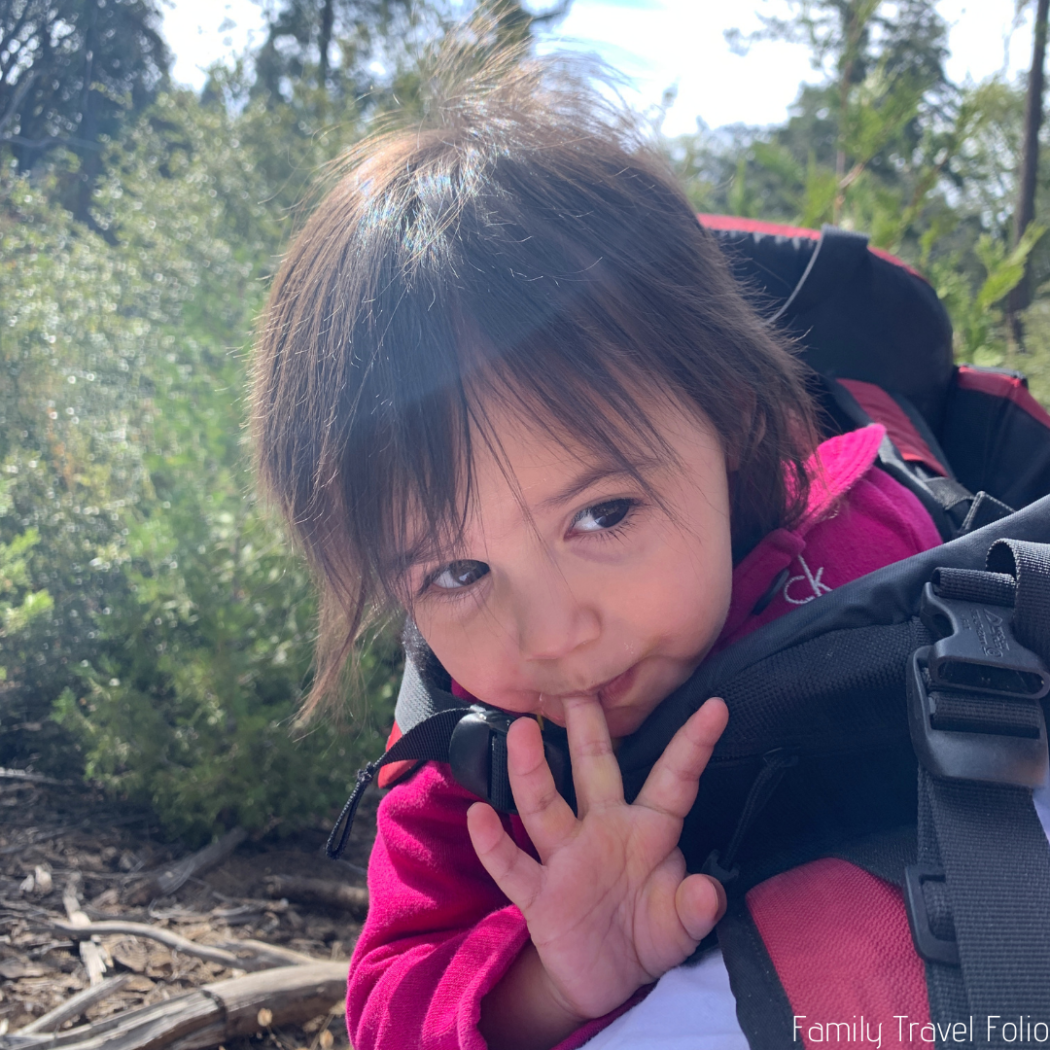

Toddlers may be fully off the bottle or still weaning off of one, so check the info above for bottle info. They will need water as well (unless still fully on breast milk or formula).
Snacks are going to be very important. They will get cranky if they are hungry, so come prepared with not just snack junk food, but a good mix of snacks that provide energy and aren’t very messy.
Some examples are listed below:
- Granola bars (age appropriate choices)
- Fruit (pre-cut to proper bite sizes)
- Fruit pouches or non-refrigerated yogurt pouches
- Crackers (we like the teething crackers)
Goldfish or cheerios are better for the car ride since on the hike you risk the munchkin dropping (or throwing…) the container. You could always give them a little handful at a time, but it does take a bit more effort than something that’s just one piece and one-handed.
Young Kids:
Our list of snacks is pretty similar to the toddler one, but you may want to introduce gummies (we give after the granola bar snack) and trail mix. Also, you may not need to pre-cut up the fruit depending on their age*.
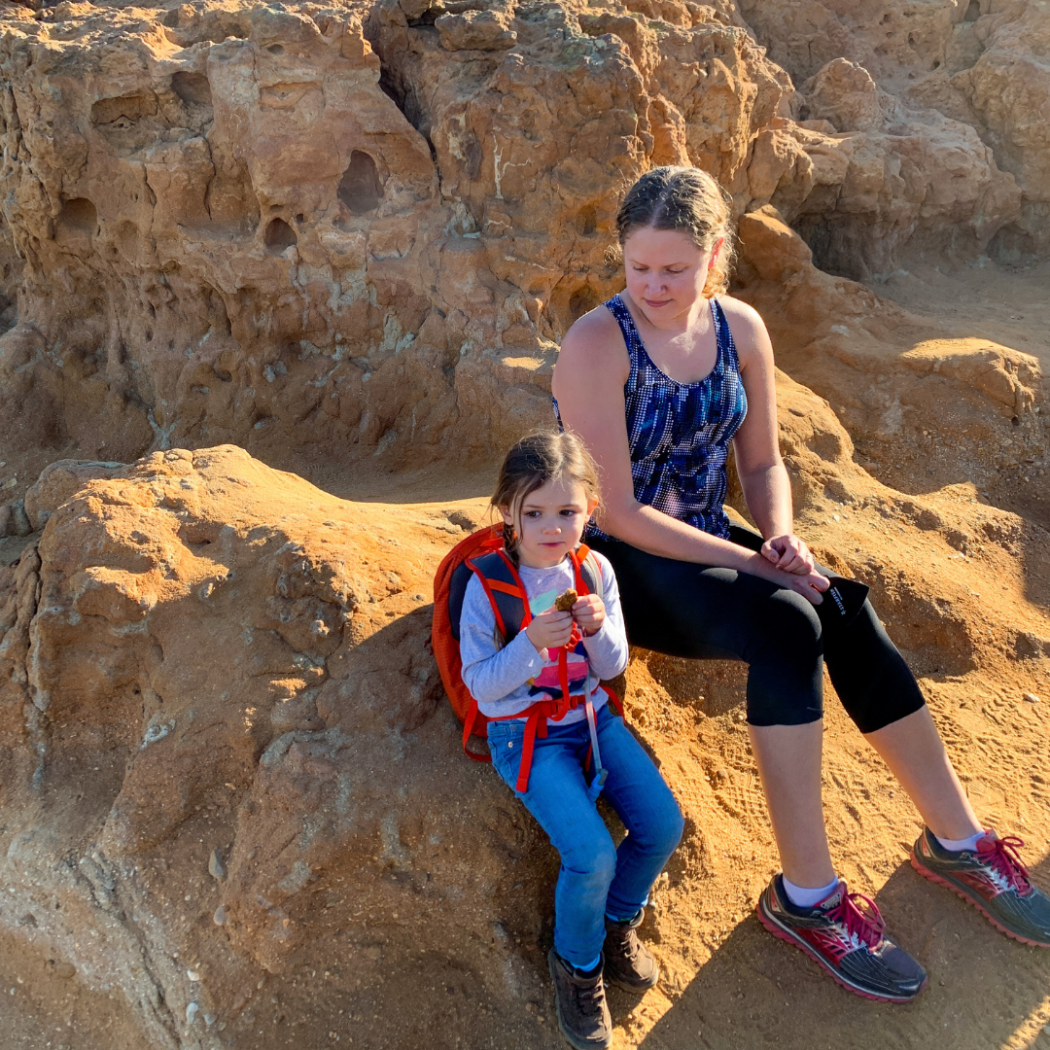

*Extra tip: pre-cut the fruit even if they can handle the larger pieces for 4 different reasons:
1.) It lasts longer: they can have 1-2 slices then keep hiking and then munch on another one.
2.) Easier to eat smaller pieces while walking.
3.) They think they are getting more. What do kids think is more: one whole apple or 20 apple slices?
4.) Can more easily share the same snack with younger sibling.
Equipment:
For all hikers, weather protection is a must.
- Sunscreen: Just check with your pediatrician if your little one is too young for sunscreen (typically under 6 months).
- Hats (for sunny or cold weather): The warm hat for cold weather is perfect when starting your hikes in the chilly morning, then switching to a sun hat as the weather starts to warm up with the sun rising.
- Weather Appropriate Layers: We like to go with a base layer, T-shirt, and a jacket. If it’s raining, make sure it’s a water-proof jacket. If it’s extra cold, add in an extra warm sweater or jacket and/or vest under your final outer jacket layer. If the weather is nice and warm, you may not need the base layer unless it is a cool fabric for extra sun protection.
Babies:
- Hiking Carrier: A Hiking carrier is a must when hiking. It leaves your hands free while making sure little munchkin is secure. Take a look at this great comparison article on REI: Tested: The Best Kids Carriers to start your research on the perfect fit.
To be honest, the carrier we use is one from a baby exchange thrift store, and it’s held up quite well.
Toddlers:
- Hiking Carrier: Don’t get rid of that carrier just yet! I know toddlers can walk, but they can’t walk far and you don’t want them to walk right off the path. We only let our toddler walk when we are on flat, open ground.
- Shoes: You don’t need to get crazy with an expensive pair of toddler hiking boots they will only wear once before they are too small (unless you want to), but if you want your little toddler to walk for part of the trail, make sure their shoes have a good sole and don’t slip off easily. Those soft baby shoes that can’t get wet are probably not the best choice.
Young Kids:
- Hiking Shoes: OK, here’s where it’s great to invest in those hiking shoes (especially if younger siblings can get good use out of the hand me downs!). Good grip for the little kids who are hiking most of the way makes a huge difference.
Now this isn’t mandatory. My siblings and I always wore tennis-shoes when hiking. I only got a pair of hiking shoes recently as an adult. But I do see a big difference in the steps our munchkin takes with shoes that have a good grip on the bottom and slippery tennis-shoes. Worth the investment in my opinion. - Hiking Poles: Our 4 year old is still at the point where she holds my hands most of the time. Once she gains stability and confidence on her own, then we’ll look into hiking poles. Check out this REi article on How to Choose and Use Trekking Poles and Hiking Staffs if you’re interested in more details, or check out this great article on 13 Best Trekking Poles for Kids, which gives a range of 3-14 years for kids’ trekking poles.
How do I find Family Friendly Trails?
When we signed up for the 52 Hike Challenge, my husband downloaded the AllTrails App. It’s also available for use on a desktop as well. It’s a free database with extra features for the paid pro version.
We purchased the Pro version with our 52 Hike Challenge discount, and it’s been very useful to download maps to use when there’s no service and off-trail notifications.
You can Google “Family Friendly Hikes Near Me,” but AllTrails already has a very thorough database and includes real time reviews from others who have recently hiked those trails.
By looking at reviews, you can tell if that moderate trail is family friendly, or probably a more challenging moderate, you can tell if it’s usually heavily populated or more secluded, and so much more!
If you or your kids are new to hiking, then start out by searching for an easy level hike that isn’t too long, maybe 1 mile round trip. Work your way up to 2 mile hikes, then add in some moderate ones that seem doable based on the reviews. Check out the change in elevation, because the difficulty level isn’t just about the distance. If it’s a steep climb your kids- and you!- will get tired much more quickly.
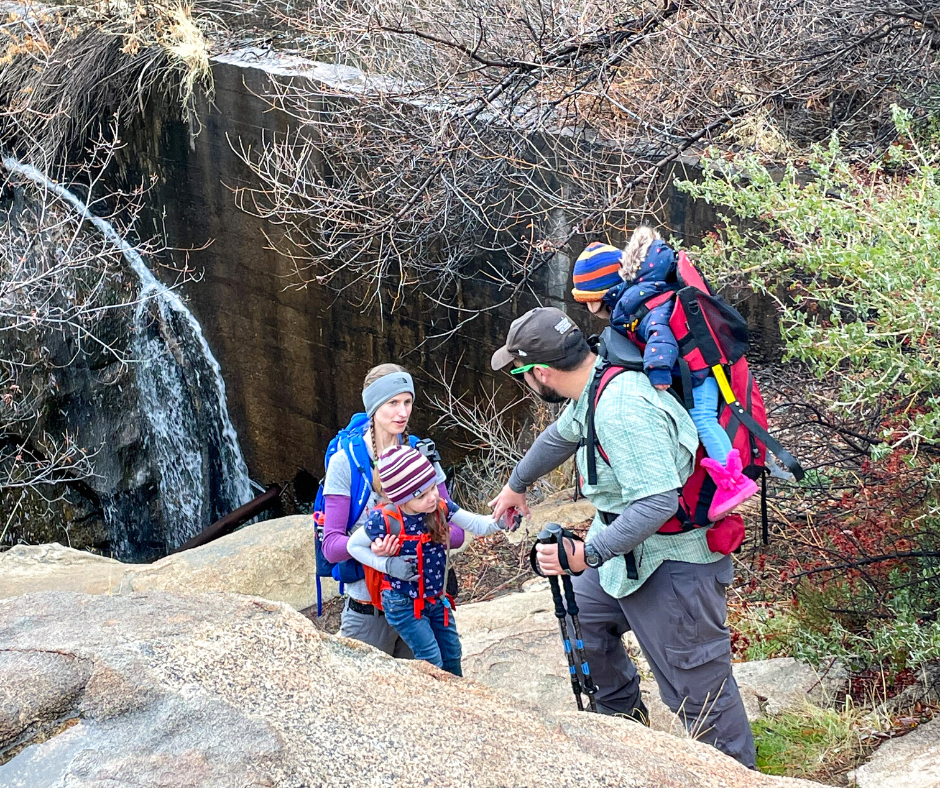

The 52 Hike Challenge with Kids:
The 52 Hike Challenge is not specifically geared towards kids (although they do have a Kids Series about completing 52 outdoor activities with your kids in a year).
It’s about getting outside, being active, and clearing your mind.
How great to complete a challenge that is good for you and great for your kids?
Take a look at our Hike #1: Watch the video below then click to read the full post: Stonewall Peak: How to Hike with Kids in Snow.
What You Get out of Hiking Every Week:
- A community of like-minded individuals looking to challenge themselves in one way or another.
- A clear path for self-motivation. No one babysits you or calls you out if you don’t keep up with the challenge. There is support if you want it, but no negative backlash. Everyone is encouraged to hike and adventure at their own pace as it fits into their lives (or the life they are trying to create).
- A journal (digital or hard-copy depending on what level of the challenge you choose) to write down all the facts or dig a little deeper with self-reflection.
- Hiking resources. Whether you are a pro or completely new to the great outdoors, the resources and discounts offered through the 52 Hike Challenge are all designed to help you.
- Refresh and refocus. Take on the additional exercise (for whatever difficulty level you choose), and clear your mind.
There are also stickers, badges, and a finisher medal- take a look at the 52 Hike Challenge for the full list of goodies and swag.
What you Need to Do to Sign Up for the 52 Hike Challenge:
- Sign up for one of the 52 Hike Challenge levels: Free, Starter, Standard, or Ultimate.
- Hike an average of once a week for 12 months (52 weeks).
It’s that simple. Sign up, and start hiking. Use the All Trails app to find local hikes near you.
Your Distance.
Your Pace.
Your Adventure.
This challenge is partnered with REI and Tecnu through 52hikechallenge.com
We are participants and paid in full for the Ultimate Package.
We are also affiliates which means we may earn a small compensation at no additional cost to you.Please contact Katie at familytravelfolio@gmail.com with any additional questions, or comment below.



